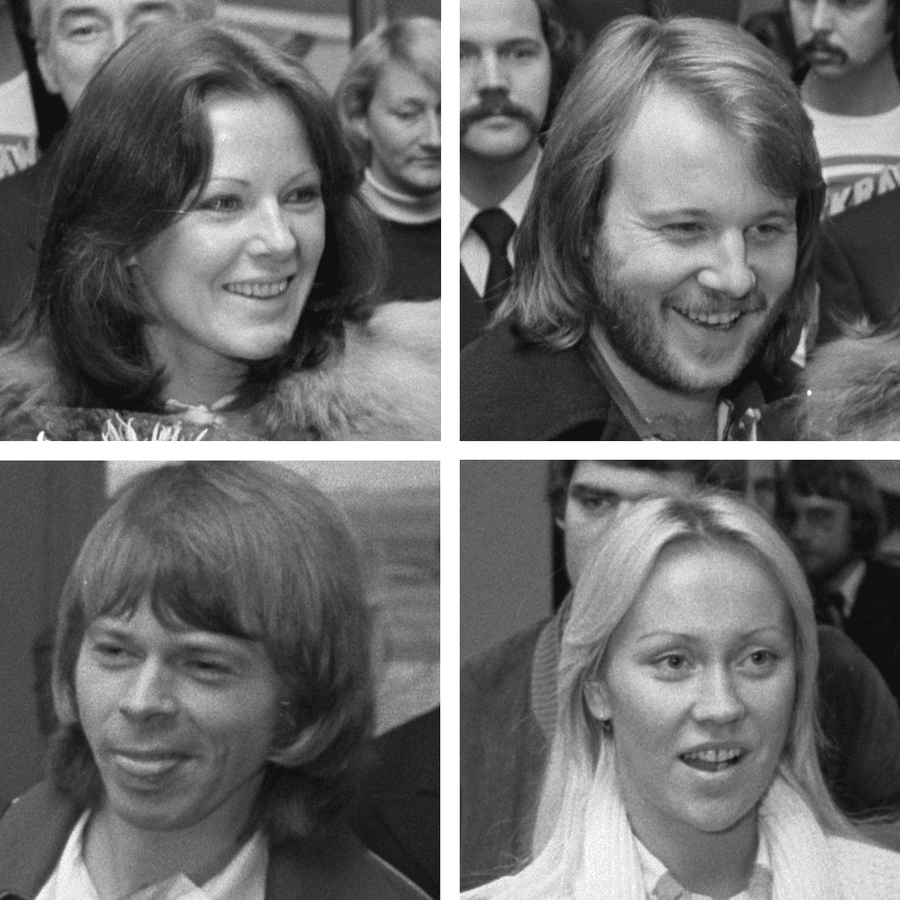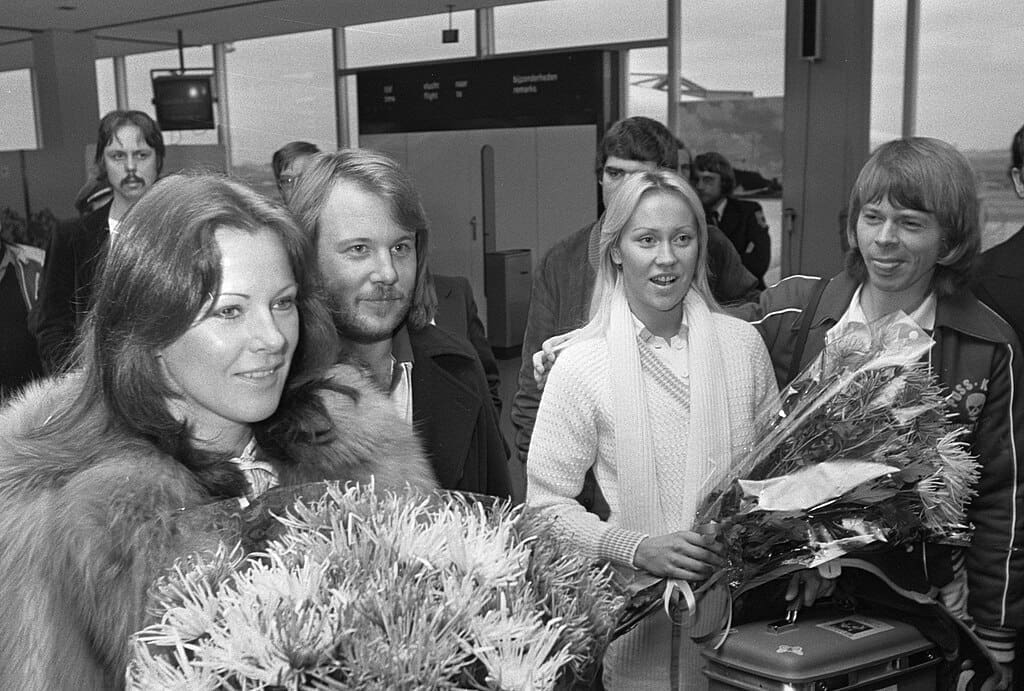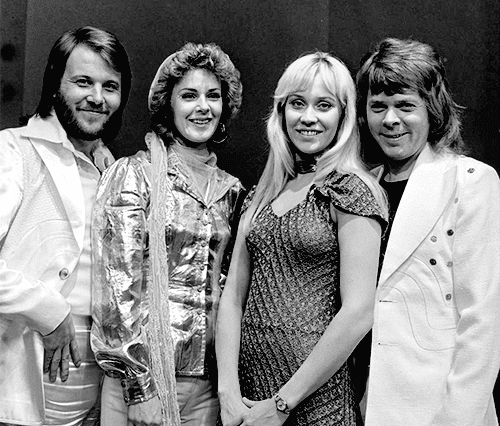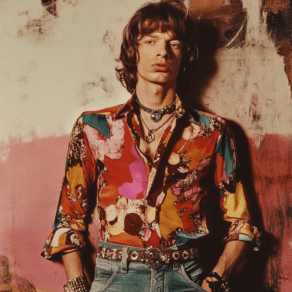ABBA, one of the most iconic pop groups in history, has left an indelible mark on global music culture.

Formed in Sweden in 1972, ABBA consists of four members: Agnetha Fältskog, Björn Ulvaeus, Benny Andersson, and Anni-Frid Lyngstad. Their unique combination of catchy melodies, emotionally resonant lyrics, and an unmistakable blend of pop, disco, and folk elements has solidified their place in the pantheon of music legends.
With over 400 million records sold worldwide, ABBA’s impact extends far beyond the music charts. Their songs have been featured in movies, musicals, and tribute concerts, and their influence is felt in everything from fashion to modern pop music production. This article will delve into ABBA’s musical legacy, covering their greatest hits, the stories behind their songs, and the cultural phenomena they have inspired. Through this journey, we will explore why ABBA’s music continues to resonate with new generations of fans, decades after their initial success.
The Early Days: Formation and Breakthrough
ABBA’s journey to stardom began with the unlikely partnership of two songwriting pairs: Benny Andersson and Björn Ulvaeus, who had already experienced moderate success with their respective bands, and vocalists Agnetha Fältskog and Anni-Frid Lyngstad, who were solo singers in Sweden.

The group originally performed under the name “Björn & Benny, Agnetha & Anni-Frid,” which proved cumbersome. It wasn’t until 1973, when their manager Stig Anderson suggested they take the initials of their first names to create the name ABBA, that they adopted the moniker that would become synonymous with international success.

Their big break came in 1974 when they represented Sweden in the Eurovision Song Contest with the now-iconic song Waterloo. With its catchy melody, upbeat rhythm, and memorable performance, ABBA won the contest and, in doing so, launched their global career. Waterloo hit number one across Europe and reached the top 10 in the United States, marking the beginning of ABBA’s rise to superstardom.
ABBA’s Greatest Hits: Songs That Defined a Generation
ABBA’s music is instantly recognizable, characterized by infectious melodies, rich vocal harmonies, and a polished production style that would become their signature.
One of ABBA’s most striking qualities during this era was their ability to balance fun, lighthearted music with emotional depth. While songs like “Dancing Queen” and “Mamma Mia” invited listeners to the dance floor, others such as “The Winner Takes It All” showcased the emotional complexity and vulnerability that made their music relatable to listeners on a deeper level.
Below, we explore some of their most memorable hits:
1. ABBA’s Dancing Queen (1976): A Disco Anthem for the Ages
“Dancing Queen” (1976) is arguably the crown jewel of ABBA’s discography and has solidified its place as one of the most recognizable and beloved songs in pop music history. Released as the lead single from their fourth studio album Arrival, the song captures the essence of the 1970s disco era with its infectious rhythm and emotional depth. The signature blend of jubilant melodies and poignant lyrics helped “Dancing Queen” transcend its era and remain relevant to audiences for decades.
A Global Sensation
“Dancing Queen” was an instant success upon release, topping the charts in over a dozen countries, including the US, UK, Australia, and much of Europe. Its universal appeal lies in its feel-good nature; the song embodies a carefree, joyous spirit that captures the elation of dancing and youth. The track’s disco-driven rhythm, rich orchestration, and harmonic complexity made it a standout in the pop landscape of the 1970s, quickly becoming ABBA’s only number one hit in the United States.
Musical Mastery
The track’s distinctive opening with sweeping piano chords and a glimmering glissando on the piano immediately grabs the listener’s attention. The song is an exceptional blend of rhythm and harmony, fusing a disco beat with classical elements, including orchestral arrangements. Benny Andersson and Björn Ulvaeus, ABBA’s primary songwriters, were praised for their composition skills in creating a sophisticated yet accessible track that feels both grand and intimate.
The emotionally stirring vocals of Agnetha Fältskog and Anni-Frid Lyngstad add to the song’s magic, blending seamlessly to create an almost ethereal vocal harmony. Their performances deliver a sense of euphoria and nostalgia, appealing to both the thrill of the moment and the bittersweet passage of time.
Lyrics and Themes
Lyrically, “Dancing Queen” captures a sense of liberation and joy. It follows a young woman who revels in the freedom of dancing, losing herself in the music and the moment. The song conveys the magic of youthful exuberance and the simple pleasures of life, perfectly encapsulating the carefree spirit of the disco scene.
The timeless quality of the lyrics has made the track a staple at weddings, parties, and celebrations, but it also resonates on a deeper level. Beyond the dancefloor, “Dancing Queen” touches on universal themes of freedom, joy, and fleeting moments of happiness. This emotional resonance allows the song to connect with multiple generations, as listeners often reflect on their own youthful experiences.
Cultural Impact
Over the years, “Dancing Queen” has become more than just a song—it has become a cultural icon. It remains a must-play at weddings, birthday parties, and even political rallies, famously played at royal events such as King Carl XVI Gustaf of Sweden’s wedding and more recently at Queen Elizabeth II’s Jubilee celebration. The song’s infectious energy and universal appeal make it a crowd favorite across a range of events, from nightclubs to state occasions.
Its influence stretches beyond the music industry. The track has inspired countless covers, featured prominently in movies like Mamma Mia! and TV shows, and continues to make waves in popular culture. Even decades after its release, “Dancing Queen” regularly tops lists of the greatest songs of all time and is widely regarded as one of the best pop songs ever recorded.
In short, “ABBA’s Dancing Queen” remains a timeless anthem of joy, freedom, and celebration, beloved by millions across generations. Its ability to capture the carefree spirit of youth, paired with ABBA’s unparalleled musical craftsmanship, has ensured its place as a defining track in the history of pop music. This continued cultural relevance makes it more than just a hit from the 1970s; it’s a permanent fixture in the soundtrack of life for countless fans worldwide.
2.Mamma Mia (1975): The Song that Became a Global Phenomenon
“Mamma Mia” (1975) is a quintessential ABBA track that stands as one of the group’s most recognizable and beloved songs. Written by the songwriting team of Benny Andersson, Björn Ulvaeus, and Stig Anderson, the song is a shining example of ABBA’s knack for creating infectious, feel-good pop music with emotional undertones. Released as the title track from their third studio album, Mamma Mia became an international hit, capturing hearts with its irresistible blend of catchy melodies, playful lyrics, and flawless production.
Musical Composition and Hook
“Mamma Mia” grabs the listener from the very first note with its iconic marimba introduction—a sound that immediately sets the tone for the upbeat, lively nature of the song. The track features a bouncing rhythm and exuberant harmonies, hallmarks of ABBA’s signature sound, while the prominent piano and driving guitar riffs keep the energy high throughout.
One of the most compelling features of “Mamma Mia” is its call-and-response style chorus, where the lead vocals trade lines with a soaring backup vocal section, culminating in the unforgettable refrain: “Mamma Mia, here I go again, my my, how can I resist you?” This hook became synonymous with the ABBA brand, cementing the song’s place in pop music history.
The structure of “Mamma Mia” is crafted to build tension and release, with each verse leading up to the high-energy, jubilant chorus. The lighthearted yet relatable lyrics, which speak to the pull of a relationship that’s hard to leave behind, create an emotional dynamic that resonates with listeners of all ages.
Storytelling and Themes
At its core, “Mamma Mia” tells the story of a person who finds themselves continuously drawn back to a former lover, despite their better judgment. The song expresses both vulnerability and inevitability, with the narrator struggling to break free from the emotional ties that bind them to their past.
The playful tone of the music juxtaposes the bittersweet theme of heartache and longing, creating an engaging contrast that has universal appeal. This lyrical theme of conflicted emotions—desiring love yet fearing vulnerability—is something many can relate to, making “Mamma Mia” both timeless and emotionally impactful.
Global Success and Cultural Impact
“Mamma Mia” was a commercial success from the outset, reaching number one on charts in countries like the UK, Germany, and Australia. Its infectious melody and cross-generational appeal made it one of ABBA’s signature songs, contributing to the band’s rise to global superstardom.
Beyond its initial chart success, Mamma Mia would go on to have a significant second life as the inspiration for the hit 1999 jukebox musical of the same name. The Mamma Mia! musical featured a storyline based around ABBA’s greatest hits and became a smash hit on Broadway and London’s West End. The success of the stage show led to the highly successful 2008 film adaptation, starring Meryl Streep, Pierce Brosnan, and Amanda Seyfried, among others.
The Mamma Mia! movie brought ABBA’s music to a whole new generation of fans, reigniting interest in the band’s discography and introducing their timeless hits to younger audiences. The sequel, Mamma Mia! Here We Go Again (2018), further entrenched ABBA’s place in modern pop culture, proving the enduring power of their music.
Legacy and Modern Resonance
“Mamma Mia” is not just a song—it’s a cultural touchstone. It helped define the sound of 1970s pop music while maintaining a relevance that has endured well into the 21st century. The song’s playful energy, nostalgic themes, and instantly recognizable melody have kept it a staple at parties, karaoke nights, and theatrical performances. Today, Mamma Mia remains a key song that encapsulates ABBA’s legacy of blending emotional storytelling with upbeat, danceable tunes.
Through its countless covers, performances, and its place at the center of a global musical phenomenon, “Mamma Mia” is more than just a song; it’s an anthem of joyous resilience and the undeniable pull of love. Its continual popularity ensures that ABBA’s legacy remains alive and well, not only in the music industry but also in popular culture at large.
In conclusion, ABBA’s “Mamma Mia” is a true pop masterpiece that balances lighthearted fun with deep emotional resonance. Its infectious melody and universally relatable themes continue to capture the hearts of listeners, both young and old, making it one of ABBA’s most iconic contributions to the world of music.
3. ABBA’s “The Winner Takes It All” (1980): A Heartfelt Anthem of Heartache
“The Winner Takes It All” is widely regarded as one of ABBA’s most emotionally powerful and iconic songs. Released in 1980 as the lead single from their album Super Trouper, the track explores themes of heartbreak, loss, and emotional vulnerability—delivered through one of the band’s most stirring vocal performances by Agnetha Fältskog. Over time, it has become synonymous with emotional ballads in pop music and remains a fan favorite, both for its lyrical depth and timeless appeal.
Song Background and Inspiration
“The Winner Takes It All” is often perceived as reflecting the personal turmoil within ABBA, specifically the divorce between Björn Ulvaeus and Agnetha Fältskog, which was finalized in 1980—the same year the song was released. While Ulvaeus, who wrote the lyrics, has stated that the song is not entirely autobiographical, it’s hard to ignore the emotional resonance in the song’s lyrics, which appear to convey the sadness and finality of a breakup.
Ulvaeus has described the lyrics as being about a woman who is left devastated after a romantic split, realizing that in the end, one person inevitably “wins” in the emotional aftermath, while the other “loses.” Agnetha’s raw and poignant delivery of the lyrics added an authenticity that captivated listeners worldwide.
Lyrical Breakdown and Meaning
The song opens with melancholy piano chords and immediately sets a somber tone with lyrics like “I don’t wanna talk about the things we’ve gone through”. The narrator reflects on the end of a relationship, emphasizing how there’s no point in discussing the past because the outcome is final. The title line, “The winner takes it all”, alludes to the fact that in love, as in life, someone always comes out on top, while the other is left with nothing.
As the song progresses, it becomes clear that the protagonist feels like a victim, having lost not just a partner but also dignity and self-worth. The emotional depth of the song is amplified by Agnetha’s voice, which conveys a sense of fragility, heartbreak, and resignation.
Notably, the lyrics also reference the idea of fate and how relationships can feel like a game where the outcome is beyond one’s control: “The gods may throw a dice, their minds as cold as ice”. This metaphor suggests a cruel randomness to love and loss, one that is indifferent to the feelings of those involved.
Chart Success and Reception
Upon its release, “The Winner Takes It All” became a global hit, reaching number one in several countries, including the UK, Belgium, Ireland, and South Africa. It also charted in the top 10 in numerous other regions, including the United States, where it peaked at number eight on the Billboard Hot 100. The song’s commercial success was matched by critical acclaim, with many praising its mature, introspective lyrics and Agnetha’s heart-wrenching performance.
Decades later, “The Winner Takes It All” remains one of ABBA’s most beloved songs and is frequently performed in tribute concerts, covered by other artists, and used in popular media. The song was also prominently featured in the Mamma Mia! musical and its subsequent film adaptations, further cementing its place in popular culture.
Musical Composition and Production
Musically, “The Winner Takes It All” is a beautifully crafted ballad that highlights ABBA’s impeccable songwriting and production skills. The song features lush harmonies and a sweeping arrangement that gradually builds in intensity, reflecting the growing emotional weight of the lyrics. Benny Andersson’s piano work anchors the melody, while layers of strings and synthesizers add a sense of grandeur and melancholy.
One of the most striking elements of the song is its use of dynamics. The verses are understated, with Agnetha’s voice taking center stage, allowing the listener to fully absorb the emotional depth of the lyrics. As the song progresses, the instrumental arrangement swells, adding a sense of drama that underscores the devastation of the song’s subject matter.
Legacy and Cultural Impact
“The Winner Takes It All” has transcended its initial release to become one of ABBA’s most iconic songs. Its universal themes of heartbreak and emotional recovery resonate with listeners across generations, making it a song that continues to connect with new audiences.
The song has been covered by numerous artists, from Cher to Il Divo, each bringing their own interpretation to its timeless themes. It has also been used in countless television shows, movies, and documentaries, often to underscore moments of emotional intensity.
Additionally, “The Winner Takes It All” has been a staple in live performances, both by ABBA tribute bands and during the band’s various reunion moments. The song’s enduring popularity is a testament to its emotional power, musical brilliance, and the universal nature of its message.
In summary, “The Winner Takes It All” stands as one of ABBA’s most enduring and emotionally resonant songs. With its heartfelt lyrics, memorable melody, and Agnetha Fältskog’s stunning vocal performance, it remains a timeless anthem of love and loss, securing its place in both the hearts of fans and the annals of music history.
4. Waterloo (1974)
The song that started it all, Waterloo remains one of ABBA’s most recognizable hits. With its lively beat and anthemic chorus, Waterloo tells the story of someone surrendering to love, much like Napoleon at the Battle of Waterloo. The song’s victory at the 1974 Eurovision Song Contest marked the beginning of ABBA’s global domination, and it remains a quintessential track in their catalog.
5. Fernando (1976)
“Fernando,” released in 1976, stands as one of ABBA’s most iconic and emotionally resonant tracks. Originally intended as a solo piece for Anni-Frid Lyngstad, it was re-recorded by the group and quickly became one of their most commercially successful hits. With a distinctive Latin-inspired rhythm and evocative storytelling, “Fernando” tells the tale of two old friends reflecting on their shared experiences in a distant war, making it one of ABBA’s more mature and narrative-driven songs.
The melody of “Fernando” is a standout for its softness and beauty, perfectly complementing the song’s reflective lyrics. Unlike many of ABBA’s upbeat tracks, “Fernando” has a more subdued, nostalgic tone, which adds to its emotional depth. The combination of acoustic guitars, gentle percussion, and the harmonies of Agnetha Fältskog and Anni-Frid Lyngstad creates a hauntingly beautiful sound that resonates with listeners around the world.
Chart Success “Fernando” enjoyed incredible chart success globally, topping the charts in countries such as Australia (where it stayed at number one for 14 weeks), the UK, and many others across Europe. It also gained popularity in North America, further establishing ABBA’s international dominance during the late 1970s.
Cultural Significance The song’s influence extended beyond just the charts—it became a cultural phenomenon. “Fernando” is often associated with a sense of nostalgia and is frequently cited as one of the band’s most poignant and memorable ballads. Its universal themes of friendship, remembrance, and the passage of time ensure that it continues to resonate with audiences across generations.
The track also gained renewed attention when it was featured in the hit musical Mamma Mia! and its film adaptations, where its narrative of reflection and reconciliation fitted seamlessly into the story’s emotional arc. This resurgence helped bring “Fernando” to a new generation of listeners.
Legacy “Fernando” remains a staple in ABBA’s legacy, representing the band’s ability to blend pop with more serious, heartfelt themes. Its timeless appeal and universal message of peace and friendship continue to make it one of ABBA’s most beloved tracks. The song’s lasting influence on pop music is evident, as it has been covered and referenced by many artists and remains a fan favorite at ABBA-themed events and tribute concerts.
In conclusion, ABBA’s Fernando is more than just a chart-topping hit; it is a musical narrative that captures the emotions of reflection and camaraderie. Its Latin-inspired rhythms, emotional storytelling, and widespread appeal cement its place as a standout in ABBA’s iconic catalog, continuing to touch the hearts of listeners worldwide.
6. Voulez-Vous (1979): ABBA’s Disco Anthem
Released in 1979, “Voulez-Vous” stands as one of ABBA’s most definitive and high-energy songs from their foray into the disco genre. As the title track of their sixth studio album, Voulez-Vous, the song showcases ABBA’s successful transition into disco—a genre that dominated the late 1970s. The song’s title, meaning “Do you want?” in French, underscores the seductive and flirtatious tone that runs throughout the track.
The Sound and Production
“Voulez-Vous” differs from ABBA’s earlier, pop-oriented hits by fully embracing the driving beats and glittering production typical of disco music. The pulsating bassline, infectious groove, and prominent use of synthesizers create a club-ready sound that fits perfectly with the vibrant nightlife of the era. The instrumental arrangement is built to encourage dancing, with Benny Andersson’s synthesizer lines leading the charge, complementing the rhythmic backbone provided by the bass and drums.
To achieve the quintessential disco sound, ABBA recorded part of Voulez-Vous at Criteria Studios in Miami, where artists like the Bee Gees had recorded some of their biggest disco hits. The influence of American disco is palpable in the song’s sleek production and relentless tempo.
Lyrics and Theme
The lyrics of “Voulez-Vous” exude mystery, excitement, and a sense of spontaneity, mirroring the seductive and carefree atmosphere of a night on the dance floor. The repetition of the phrase “Voulez-vous”, set against a backdrop of swirling melodies, gives the song a hypnotic feel, drawing listeners into its pulsating rhythm. The song doesn’t explicitly tell a linear story; instead, it uses fragments of conversation and suggestion, giving it an air of excitement and flirtation.
The chorus, with its repetitive and enticing refrain, is the heart of the song: “Voulez-vous (ah-ha), take it now or leave it (ah-ha), now is all we get, nothing promised, no regrets”. This lyrical focus on living in the moment and seizing opportunities without hesitation resonates with the ethos of the disco era—a time to enjoy life, dance, and embrace the energy of the present.
Chart Success and Reception
“Voulez-Vous” was a commercial success, charting in multiple countries, including the UK, where it became a Top 10 hit. Although it didn’t achieve the same level of chart dominance as earlier ABBA hits like “Dancing Queen” or “Waterloo,” “Voulez-Vous” cemented ABBA’s versatility as a band capable of successfully adapting to the latest musical trends.
The Voulez-Vous album, which also featured hits like “Chiquitita” and “I Have a Dream,” became one of ABBA’s best-selling albums, further propelling the group into international superstardom during the height of the disco era.
Legacy and Influence
Though “Voulez-Vous” was released during the twilight of the disco craze, it remains a fan favorite and a testament to ABBA’s ability to evolve with the times. It is frequently included in ABBA tribute concerts and has remained a popular track for dancing at retro-themed parties and discos.
The song’s influence is also evident in the enduring appeal of disco music in modern pop culture. From clubs to soundtracks, “Voulez-Vous” has found its place as one of the disco era’s defining anthems. Its inclusion in the Mamma Mia! musical and film further cemented its popularity, introducing it to new generations of fans and ensuring that its infectious energy remains part of the ABBA legacy.
In summary, ABBA’s “Voulez-Vous” represents the group’s successful venture into the world of disco, blending their signature pop sensibilities with the electric energy of the late 1970s dance scene. Its driving rhythm, seductive lyrics, and flawless production make it one of ABBA’s most enduring and iconic tracks.
7. ABBA’s “Chiquitita” (1979): A Song of Comfort and Hope
“Chiquitita”, one of ABBA’s most beloved ballads, was released in 1979 as part of their Voulez-Vous album and has since become an enduring classic. The song stands out for its heartfelt message of consolation, offering comfort to a friend in distress. Sung with tenderness by Agnetha Fältskog, it showcases ABBA’s ability to blend emotive storytelling with melodic brilliance.
Song Background and Inspiration
“Chiquitita” was ABBA’s first single of 1979 and remains one of their most successful Spanish-language hits. The word “Chiquitita” means “little one” in Spanish, and the song was initially written for the UNICEF charity event, “Music for UNICEF Concert,” held in January 1979. ABBA performed the song live during the event, and all royalties from the single have been donated to UNICEF since its release, making it one of the most generous contributions in pop music history.
Originally, the song had the working title “In the Arms of Rosalita” but underwent changes before becoming the emotionally resonant “Chiquitita.” The group’s love for Spanish culture is evident, and the song’s gentle, almost lullaby-like nature speaks to a universal audience.
Lyrical Meaning and Themes
At its core, “Chiquitita” is a song about offering solace to a friend who is going through a difficult time. The narrator speaks to the title character, reassuring her that despite the heartbreak and pain she’s experiencing, everything will eventually get better. Lyrics such as “Chiquitita, tell me what’s wrong / You’re enchained by your own sorrow” reveal the compassionate tone of the song, as the speaker offers words of encouragement and hope.
The metaphorical imagery used throughout the song evokes themes of emotional recovery. The narrator compares the emotional turmoil of the character to a breaking dawn, symbolizing that light will come again after a dark period. The line “The sun is still in the sky and shining above you” encapsulates this theme of resilience and the promise of a brighter future.
Musical Composition
Musically, “Chiquitita” is a quintessential ABBA ballad, featuring Benny Andersson’s grand piano and the rich vocal harmonies of Agnetha and Anni-Frid. The melody carries a folk-inspired vibe, adding to the soothing, comforting feel of the song. As the chorus swells, it mirrors the uplifting message of the lyrics, offering the listener a sense of optimism and hope.
The song builds gradually, with a simple piano introduction that evolves into a sweeping, orchestral arrangement. The chorus is particularly memorable, featuring harmonies that lift the song to a crescendo of emotional release. This juxtaposition of tender verses with a soaring chorus is a signature ABBA style that resonates with audiences across generations.
Chart Success and Legacy
“Chiquitita” was a massive success worldwide, reaching the top of the charts in several countries, including Belgium, Ireland, and Spain. It also became one of ABBA’s biggest hits in Latin America, where the Spanish version of the song gained immense popularity.
In the years following its release, “Chiquitita” has continued to be a fan favorite. Its enduring appeal lies in its universal themes of friendship, hope, and emotional healing. The song’s Spanish version, in particular, helped solidify ABBA’s fanbase in Spanish-speaking countries, ensuring that their music crossed cultural and linguistic boundaries.
As with many of ABBA’s tracks, “Chiquitita” has found new life in various media. The song was featured in the Mamma Mia! musical and subsequent films, introducing it to younger audiences. Its use in popular culture, combined with its poignant message, has ensured its continued relevance.
Cultural Impact and Spanish Version
One of the most remarkable aspects of “Chiquitita” is the success of its Spanish version, which ABBA recorded specifically for their Spanish-speaking fans. This version was a monumental hit in Latin America and Spain, solidifying ABBA’s presence in those regions. The Spanish rendition kept the essence of the song while catering to a broader global audience, helping the band maintain international appeal.
Beyond its chart performance, “Chiquitita” is often remembered for its association with UNICEF, reflecting the group’s philanthropic efforts. The royalties from the song have raised millions for the organization, making it not only a musical triumph but also a significant contribution to humanitarian causes.
Conclusion
ABBA’s “Chiquitita” remains a timeless anthem of compassion, healing, and friendship. With its poignant lyrics, captivating melody, and universal themes, the song continues to touch listeners’ hearts around the world. Its legacy is further strengthened by ABBA’s generosity in donating all of the song’s proceeds to UNICEF, making it a piece of music history that transcends mere entertainment. Whether in English or Spanish, “Chiquitita” is a shining example of ABBA’s ability to create music that speaks to the human experience in a deeply meaningful way.
ABBA’s Impact on Modern Pop Music

ABBA’s influence on modern pop music is profound. Their use of intricate vocal harmonies, layered melodies, and state-of-the-art studio production techniques set a new standard for pop music in the 1970s and 80s. Their producer, Michael B. Tretow, was instrumental in developing ABBA’s “wall of sound,” using multitrack recording to build lush, detailed soundscapes that gave their music a sense of grandeur.
ABBA’s songwriting, particularly the partnership of Björn Ulvaeus and Benny Andersson, emphasized storytelling and emotion. Many of their songs touch on universal themes like love, heartbreak, and longing, which resonate with listeners across cultures and generations. This approach to songwriting laid the groundwork for future pop stars, who would draw on similar themes in their own music.
Madonna
Madonna’s hit song “Hung Up” (2005) is perhaps the most explicit nod to ABBA. The track samples ABBA’s “Gimme! Gimme! Gimme! (A Man After Midnight),” with its pulsating disco beat and catchy hook. ABBA notoriously resisted letting other artists sample their music but made an exception for Madonna, illustrating the mutual respect between ABBA and modern pop royalty. Madonna’s use of the sample reinvigorated ABBA’s sound in the 2000s, blending it with contemporary production techniques to create a global hit that reached #1 in over 40 countries.
Lady Gaga
Lady Gaga’s music incorporates elements of ABBA’s blend of pop hooks and emotional depth. For instance, Gaga’s “Alejandro” has been compared to ABBA’s “Fernando” in both melody and thematic storytelling. The song taps into that same balance of catchy, upbeat production paired with lyrics that touch on themes of love and heartbreak, which was central to ABBA’s success. Gaga’s theatrical performances and carefully curated visual aesthetics also echo ABBA’s emphasis on showmanship, from their iconic fashion to their elaborate stage productions.
Katy Perry
Katy Perry’s knack for crafting polished, hook-driven pop anthems with universal appeal bears striking similarities to ABBA’s songwriting. In songs like “Teenage Dream” and “Roar,” Perry employs soaring choruses and infectious melodies that capture the emotional intensity often found in ABBA’s biggest hits, like “Dancing Queen” and “The Winner Takes It All.” Both artists share the ability to produce music that resonates across generations while maintaining a sense of lighthearted fun, a characteristic central to ABBA’s legacy.
These artists, along with many others, have taken inspiration from ABBA’s knack for combining emotional depth with a sleek, commercial pop sound. ABBA’s focus on strong melodies, their pioneering use of layered vocals, and polished production techniques laid the foundation for much of today’s pop music. Through sampling, melodic influence, and visual aesthetics, ABBA’s musical fingerprint can be seen in the works of these modern pop icons.
The Mamma Mia! Phenomenon: ABBA’s Music in Film and Theater
One of the key elements of ABBA’s lasting popularity is the success of Mamma Mia!, the jukebox musical that features ABBA’s greatest hits. The musical, which premiered in London in 1999, was created by British playwright Catherine Johnson and features a story built around ABBA’s songs.
The plot of Mamma Mia! revolves around a young woman named Sophie who, on the eve of her wedding, invites three men who could potentially be her father to the Greek island where she lives with her mother. The story is a feel-good celebration of love, family, and friendship, with ABBA’s songs seamlessly woven into the narrative.
The 2008 film adaptation of Mamma Mia! was a massive box-office hit, grossing over $600 million worldwide. Starring Meryl Streep, Amanda Seyfried, Pierce Brosnan, and Colin Firth, the movie introduced ABBA’s music to a new generation and solidified the band’s place in pop culture history. The sequel, Mamma Mia! Here We Go Again (2018), further expanded on the story and brought even more ABBA hits to the big screen.
The Mamma Mia! phenomenon has been instrumental in keeping ABBA’s music alive, with the stage musical continuing to tour worldwide and the films enjoying enduring popularity. It’s a testament to the timeless appeal of ABBA’s music that their songs can be reinterpreted in such a joyful and engaging way.
ABBA’s Cultural Legacy: From Fashion to Memes
ABBA’s influence extends beyond music—it’s embedded in fashion and modern pop culture, especially through their iconic 70s outfits and enduring presence in memes. The band’s colorful, flamboyant style has become as famous as their music, leaving a legacy in the world of fashion and pop culture.
ABBA’s Iconic Outfits: Glamour and Glitter of the 70s

One of the key visual aspects of ABBA’s legacy is their unmistakable 1970s fashion. Their costumes often featured bold colors, sparkling sequins, bell-bottoms, knee-high boots, and shimmering fabrics that screamed disco and glam. At the height of their fame, ABBA’s outfits reflected the larger-than-life persona of the group, and each member embraced the 70s aesthetic that combined glam rock, disco, and Swedish folk influences.
Some of ABBA’s most iconic outfits include:
- The Waterloo Eurovision Performance: When ABBA took the stage at Eurovision in 1974 to perform “Waterloo,” they were dressed in eye-catching outfits that set the tone for their future style. Agnetha wore a sky-blue dress with silver accents, while Anni-Frid sported a tunic with white boots. Benny and Björn donned metallic jumpsuits, embracing the bold, futuristic vibe of the time.
- Dancing Queen Era: During the “Dancing Queen” era, ABBA’s style became even more elaborate. Shimmering jumpsuits and flowing capes made their performances visually stunning. Agnetha’s iconic white jumpsuit, bedazzled with sequins, is a memorable highlight from this period and is still emulated today in ABBA-themed parties and tribute performances.
- Super Trouper Outfits: In the 1980 “Super Trouper” music video, ABBA continued their dazzling tradition with extravagant costumes that featured oversized sleeves, metallic fabrics, and elaborate patterns. These outfits, heavily influenced by the disco era, helped define the visual language of ABBA.
ABBA and the Revival of 70s Fashion
ABBA’s outfits from the 70s have made a significant comeback in recent years, particularly as retro and vintage styles have become fashionable again. Designers often draw inspiration from ABBA’s looks, particularly for their use of metallics, bold colors, and playful details. The group’s impact on fashion is evident in modern collections, from high-end runway shows to affordable high-street fashion.
In addition to the fashion world, ABBA-themed parties have surged in popularity, with fans dressing up in their best interpretations of the group’s glamorous outfits. Whether it’s for a themed event, costume party, or simply to channel some nostalgic vibes, ABBA’s fashion continues to resonate with new generations of fans.
ABBA-Themed Parties: A Celebration of Music and Style
ABBA-themed parties have become a popular way for fans to celebrate the music and style of the iconic group. These parties often feature guests dressed in sparkly jumpsuits, oversized platform boots, and flowy skirts, all reminiscent of ABBA’s most famous looks. The music sets the tone, with ABBA’s greatest hits—Dancing Queen, Waterloo, Mamma Mia—playing in the background, ensuring everyone is transported back to the 70s.
Costume contests are a staple of ABBA-themed parties, with fans recreating their favorite looks from the band’s catalog. Some of the most popular costumes include:
- Agnetha’s white jumpsuit from Dancing Queen
- Anni-Frid’s glittering cape from the Super Trouper video
- Björn and Benny’s colorful tunics and metallic pants
These parties are more than just fun—they’re a tribute to ABBA’s lasting influence on both music and fashion. Guests often come together not just for the music but to embrace the fun and flamboyant fashion of the disco era.
ABBA in Modern Memes: Nostalgia Meets Internet Culture
ABBA’s music and style have found new life in the internet age, thanks to memes and social media. The band’s legacy has taken on a comedic and nostalgic dimension, with users on platforms like Twitter, Instagram, and TikTok using ABBA’s images and lyrics to create relatable and humorous content. The song “Mamma Mia” and the famous phrase “here we go again” has been endlessly meme-ified, particularly when something unexpected happens, offering humor infused with pop culture history.
ABBA’s outlandish fashion, too, has become a recurring subject of memes, with fans poking fun at their glittering costumes while simultaneously celebrating the group’s audacious approach to style. These memes keep ABBA relevant to younger audiences who may not have grown up with the group but appreciate the humor and style of the 70s.
ABBA’s Enduring Fashion Legacy
Even decades after ABBA’s prime, their fashion influence remains strong. Fashion designers, artists, and fans continue to emulate their style. Whether it’s the revival of 70s-inspired clothing or the resurgence of vintage looks in pop culture, ABBA’s contribution to fashion history cannot be overstated. From costume parties to modern runway shows, ABBA’s iconic looks have been cemented as timeless symbols of fun, freedom, and glamor.
Their fashion is not just a reflection of the disco era—it’s a representation of ABBA’s unique ability to blend musical innovation with visual spectacle. This harmonious combination is why their outfits remain as relevant today as they were at the height of their fame.
ABBA’s fashion legacy lives on in numerous ways. ABBA-themed Halloween costumes remain popular, and their fashion is often referenced in tribute concerts and retro-themed parties. The band’s outfits from their 1970s heyday are frequently celebrated asABBA’s influence on culture extends beyond music to fashion, memes, and visual aesthetics. Their iconic outfits, including glittering jumpsuits and platform shoes, have left a lasting impact on 1970s and 1980s pop culture, continuing to inspire costume choices and retro styles in modern times. The revival of their music through the Mamma Mia! films and the digital hologram ABBA Voyage concerts has cemented their presence in the internet age, sparking viral memes, tribute performances, and social media trends.
ABBA and Technological Innovation: The Hologram Concerts and Beyond
In 2022, ABBA made headlines once again with the launch of their groundbreaking ABBA Voyage hologram concert series. After nearly four decades away from the stage, ABBA embraced cutting-edge technology to create a virtual concert experience unlike any other. The members of ABBA were digitally recreated as their younger selves, allowing them to perform their greatest hits in a visually stunning spectacle.
The ABBA Voyage concert series represents a bold step forward in the music industry, as it combines nostalgia with state-of-the-art technology to create a futuristic concert experience. The use of holograms not only allows ABBA to continue performing without physically being on stage but also enables them to engage with new generations of fans who may have never seen them perform live during their peak years.
The technological innovation behind ABBA Voyage is a testament to the group’s forward-thinking approach to their music and their desire to push boundaries. ABBA has always been at the forefront of using technology in their music, from their pioneering use of multi-track recording to their involvement in the development of the Polar Studios, one of the most advanced recording studios of its time.
You can watch the ABBA Voyage hologram concert at the ABBA Arena, a custom-built venue located in Queen Elizabeth Olympic Park, London. This cutting-edge concert blends digital avatars of Agnetha, Björn, Benny, and Anni-Frid performing live with a 10-piece band. The show features a spectacular range of their hits, including classics like “Dancing Queen” and “The Winner Takes It All.”
Tickets for the ABBA Voyage concert are available on the official ABBA Voyage website, where you can check availability and book tickets. The concert will run through various dates into 2025, with limited availability for upcoming months. Be sure to book early to secure your spot!
Through ABBA Voyage, ABBA is once again breaking new ground, showing that they are not only relevant in the digital age but also leading the way in redefining what a live concert can be.





Leave a Comment